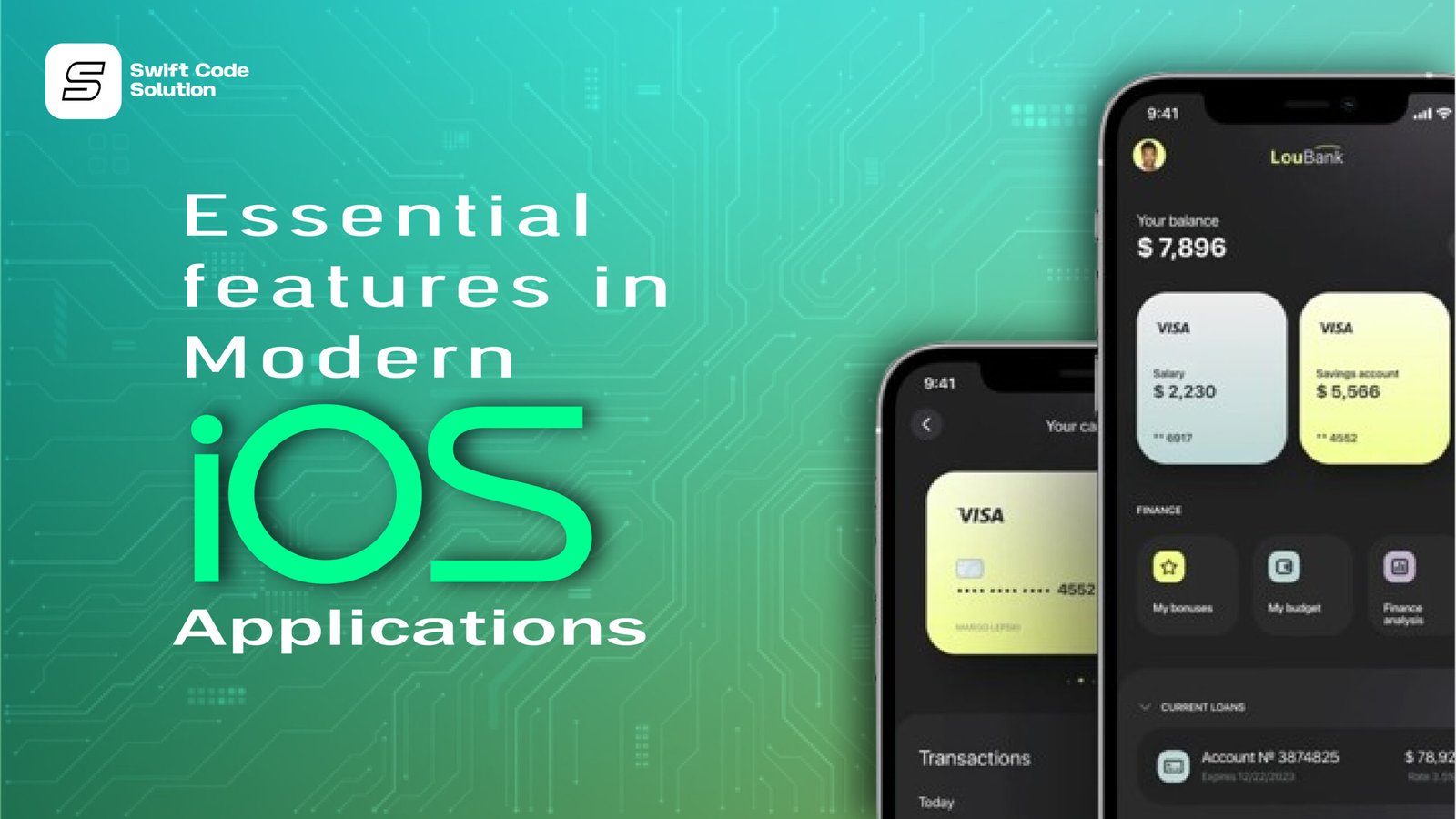In the ever-evolving world of mobile technology, iOS applications continue to lead the charge with sleek designs, intuitive interfaces, and cutting-edge features. As user expectations rise and Apple continuously updates its ecosystem, building an iOS app that stands out requires more than just a good idea — it requires strategic integration of modern functionalities.
This article explores the must-have features in modern iOS applications and how businesses can align their app strategy with user needs and platform capabilities.
1. Intuitive User Interface and Smooth Navigation
Modern iOS apps prioritize minimalism and efficiency. Users expect apps to be easy to navigate, fast, and visually appealing. A clear hierarchy, thumb-friendly layouts, and intuitive gestures like swipe-to-delete or pull-to-refresh enhance the user journey.
Apple’s Human Interface Guidelines provide an excellent framework to maintain design consistency across devices. Prioritizing UI/UX is not just a design choice — it’s a core feature that drives retention and engagement.
✨ Deliver premium user experiences with iOS app development services built on modern design principles and native interface components.
2. Face ID and Touch ID Integration
Security and convenience go hand in hand in today’s app environment. With native support for biometric authentication, modern iOS apps should integrate Face ID or Touch ID to streamline login processes while enhancing data protection.
This is particularly vital for applications dealing with sensitive user data — such as finance, healthcare, or personal productivity apps — where security cannot be compromised.
3. Push Notifications with Smart Targeting
Push notifications are a key engagement tool, but only when used smartly. Instead of sending generic alerts, modern iOS apps leverage personalized push notifications based on user behavior, location, or in-app actions.
Apple’s UserNotifications framework allows developers to manage scheduled, interactive, and remote notifications effectively, ensuring relevance and minimizing user opt-outs.
🚀 Enhance user engagement through tailored communication with robust iOS mobile application features that include smart notification systems.
4. Offline Functionality
Reliable apps aren’t just functional online. Many modern iOS applications offer offline capabilities, allowing users to interact with content or perform core actions even when internet connectivity is unstable.
Whether it’s caching important data, allowing form submissions to queue offline, or syncing once reconnected, offline functionality is critical for user experience, especially in travel, productivity, and field-service apps.
5. Seamless Performance Across Apple Devices
With the growing ecosystem of Apple devices — iPhones, iPads, Apple Watch, and now Apple Vision Pro — cross-device consistency is more important than ever. Features like Handoff, iCloud sync, and Universal Links allow seamless continuity between Apple devices.
Modern iOS apps should be optimized for adaptive layouts and unified user experience, regardless of screen size or hardware capabilities.
6. Dark Mode Support
A small yet highly appreciated feature is Dark Mode. It’s not just about aesthetics; it reduces eye strain, saves battery life on OLED screens, and aligns with user preferences.
Developers should ensure their apps dynamically adapt to the device’s system appearance settings, using Apple’s SF Symbols and system colors for a polished look in both light and dark themes.
7. AI-Powered Features and Personalization
Incorporating AI and machine learning into iOS apps is no longer a futuristic idea — it’s a current expectation. From predictive text and recommendation engines to image recognition and automation, iOS supports Core ML to bring powerful machine learning features into native apps.
Personalization driven by AI ensures users feel the app evolves with their usage patterns, improving satisfaction and time-on-app metrics.
8. Voice Integration with SiriKit
Voice control is changing the way users interact with apps. With SiriKit, iOS developers can enable users to perform tasks using voice commands, such as sending messages, booking rides, or starting workouts — all without opening the app.
Modern apps should consider leveraging voice input, especially for hands-free interaction and accessibility enhancement.
🔍 Stay ahead with intelligent, voice-ready iOS application development solutions tailored to today’s user preferences.
9. In-App Payments and Apple Pay
Streamlining transactions is vital for ecommerce, on-demand, and subscription-based apps. iOS apps now frequently include Apple Pay integration to offer one-tap payments, subscriptions, and in-app purchases — enhancing trust and improving conversion rates.
Payment flows should be frictionless, PCI-compliant, and seamlessly embedded within the user journey.
10. Privacy-First Design
Privacy is a cornerstone of the Apple ecosystem. Features like App Tracking Transparency (ATT), data access prompts, and clear permission dialogs must be implemented properly.
Modern iOS applications should clearly communicate why data is collected, use privacy labels, and give users control over their information. Not only is this good practice — it’s mandatory for App Store approval.
Final Thoughts
As user expectations shift and iOS technology advances, the features considered “essential” continue to evolve. But one thing remains constant — modern iOS applications need to be fast, secure, user-centric, and intelligent.
Developers and businesses who focus on these core attributes position their apps for long-term success in the competitive App Store landscape.
🧠 Turn your app idea into a sleek, high-performance experience with expert iOS app development services tailored for today’s Apple ecosystem.







